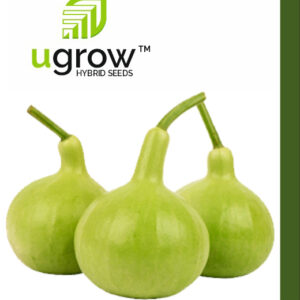White bitter gourd, also known as white bitter melon or white balsam pear, is a variety of bitter gourd with a pale or white color compared to the more common green bitter gourd. Here’s a guide on how to grow white bitter gourd from seeds:
- Climate and Soil: White bitter gourd, like its green counterpart, thrives in warm climates. It requires well-draining, fertile soil with good organic content. Aim for a slightly acidic to neutral soil pH (around 6.0 to 7.0).
- Starting Seeds: Start white bitter gourd seeds indoors or sow them directly into the ground after the last frost date. If starting indoors, plant seeds in pots or seedling trays about 4-6 weeks before the planting season. Transplant seedlings outdoors once the weather is consistently warm.
- Planting Method: Plant seeds about half an inch deep in well-draining soil. Space the seeds a few inches apart. Ensure they have adequate space to grow, considering that the vines can spread.
- Sunlight: White bitter gourd plants require plenty of sunlight, ideally 6-8 hours per day.
- Watering: Keep the soil consistently moist but not waterlogged. Regular watering, especially during dry periods or as the fruits develop, is essential for proper growth.
- Support: White bitter gourd plants are vines that benefit from support structures like trellises or stakes. Providing support helps the plants climb and keeps the fruits off the ground, reducing the risk of rot and pest damage.
- Fertilization: Before planting, incorporate organic matter like compost into the soil. White bitter gourd plants don’t usually require heavy fertilization, but you can use a balanced fertilizer according to package instructions during the growing season.
- Weed Control: Keep the area around white bitter gourd plants free from weeds. Mulching can help suppress weeds and retain soil moisture.
- Pest and Disease Control: White bitter gourd plants can be susceptible to common pests like aphids or whiteflies. Also, watch for diseases such as powdery mildew. Use organic or chemical methods as needed to control pests and diseases.
- Harvesting: White bitter gourd fruits are typically harvested when they are young and tender, usually about 4-6 inches long. Use a knife or scissors to cut the fruits from the vine. Regular harvesting encourages continuous fruit production.
Growing white bitter gourd involves similar care and cultivation practices as green bitter gourd. However, specific varieties might have slight differences in growth requirements, so it’s essential to follow guidelines specific to the white bitter gourd variety you’re growing.















Reviews
There are no reviews yet.